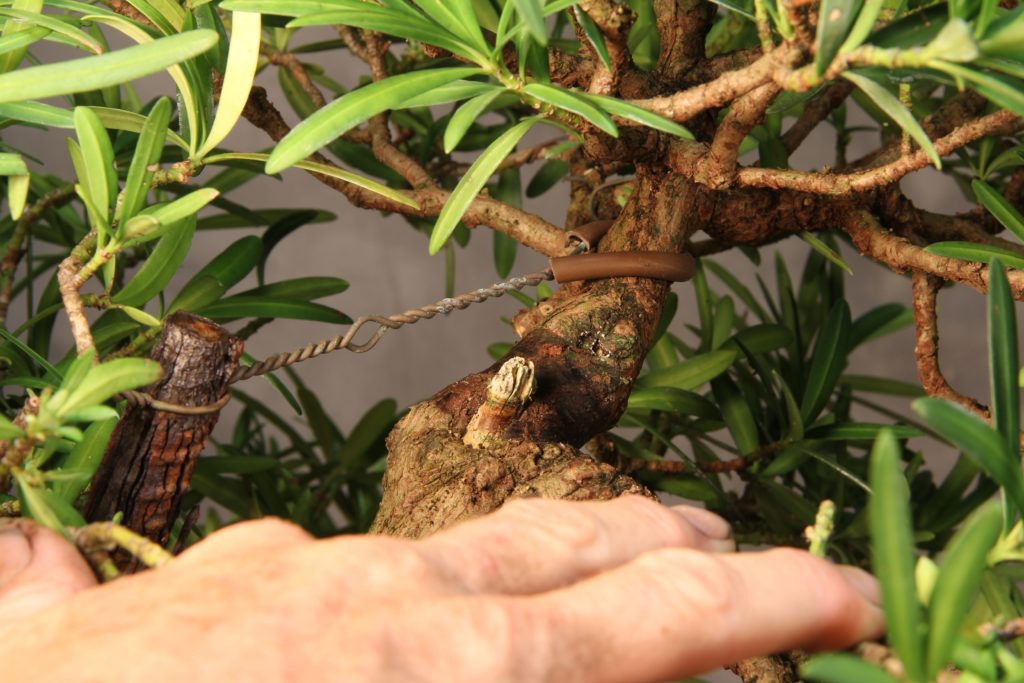
Sometimes our bonsai trees take an unexpected turn. Such was the near devastating case of the “Wind Crack.” Let’s set the stage. Florida, where this Buddhist Pine, Podocarpus sp., lives has a deserved reputation as a windy state, just ask any golfer. Several years ago returning home one evening after a particularly windy day, I found this bonsai tree had done a headfirst dive unto the gravel path that leads to my bridge over a stream. The tree fell about 3 feet, and according to high school physics hit the ground at about 11 miles per hour. This impact was enough to cause serious damage to the apex. In fact, the main apex trunk extension cracked about 70 percent across. However it was not totally broken off so I decided to try to save the top by applying some reconstructive surgery.

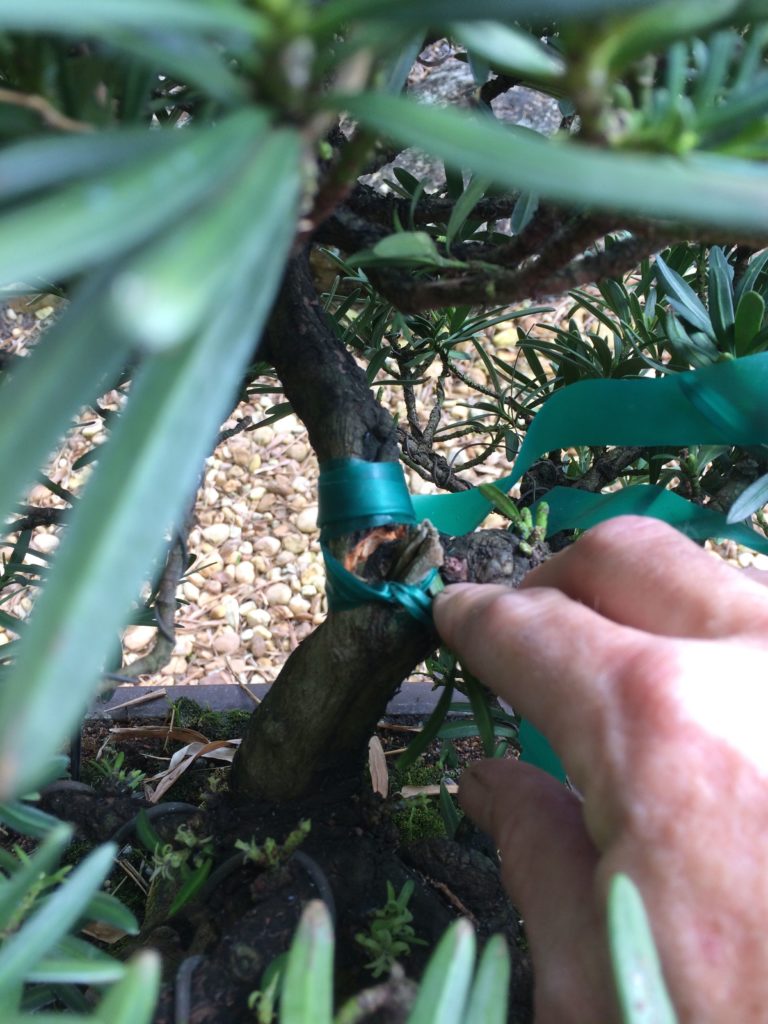
Since this tree had a single apex, re-securing the crack required an imaginary anchor point. The apex needed to be pulled from about 3 inches behind the tree where no branch existed. To overcome this problem a sturdy piece of carbon steel reinforcing bar (commonly called rebar by the concrete trade) served a temporary anchor point. By fastening the half-inch steel bar to the trunk in two places below the crack, it extended vertically past the damage to the apex. The half inch steel was strong enough to support the force of turnbuckle of copper wire connecting the rebar and the apex to pull the crack closed. Stretchy floral tape placed taut covered the now closed crack. Returning the tree to the pedestal, this time with polyethylene rope securing the pot and tree to the stand, it was left free to grow for 2 and a quarter years.


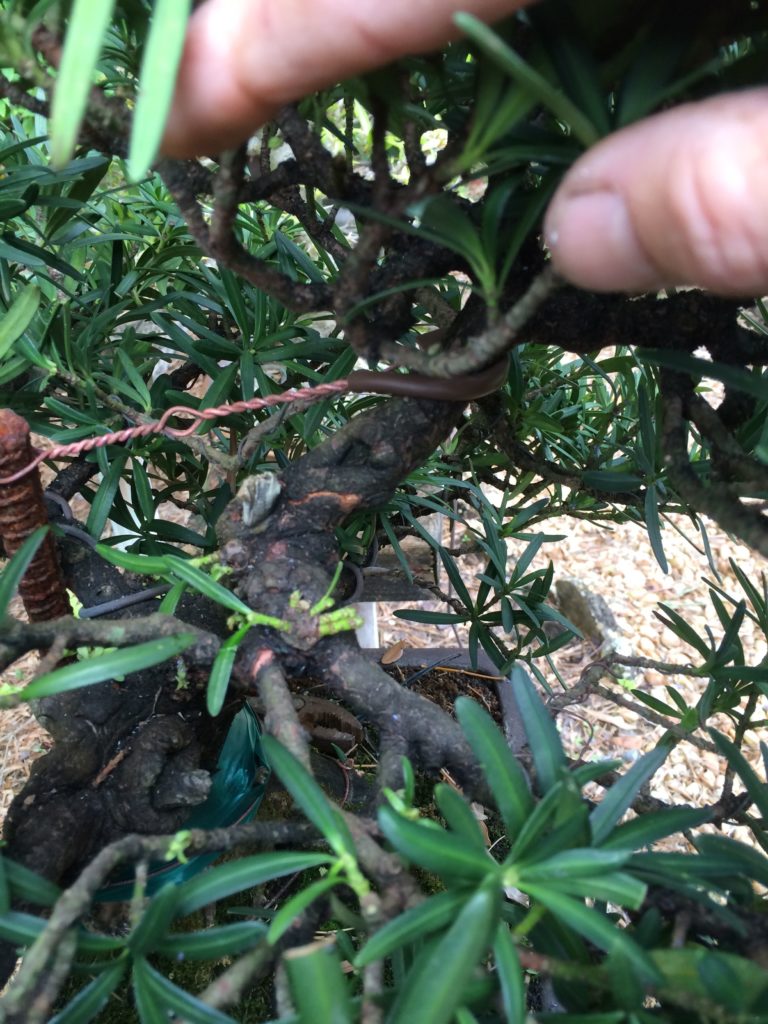
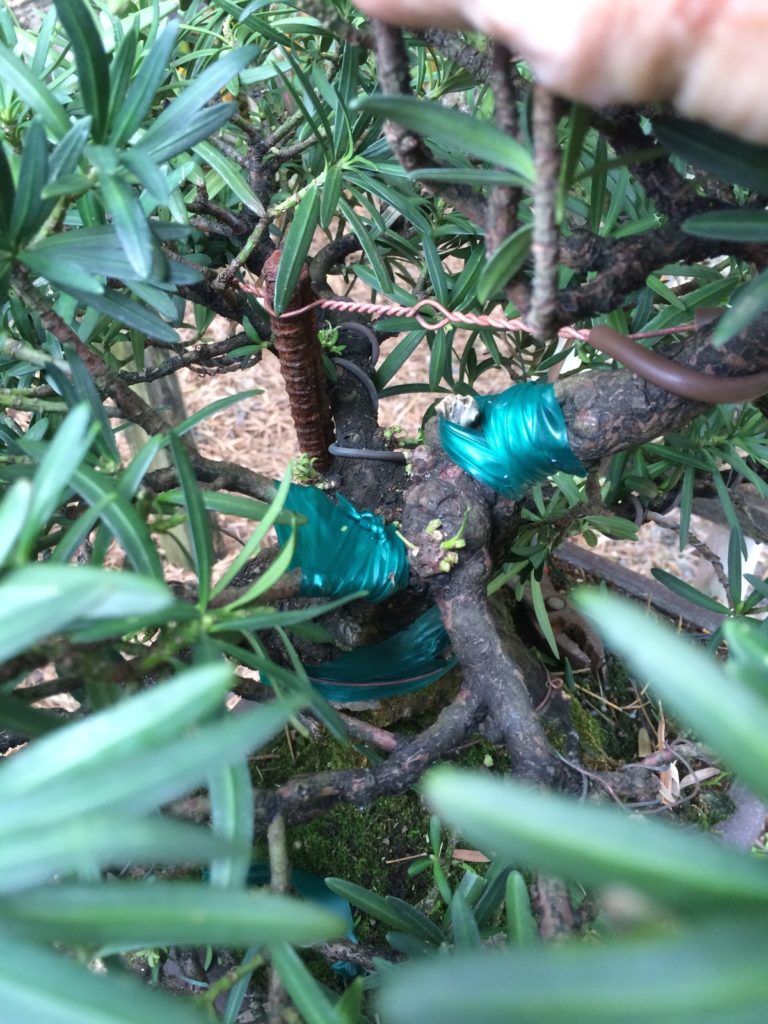
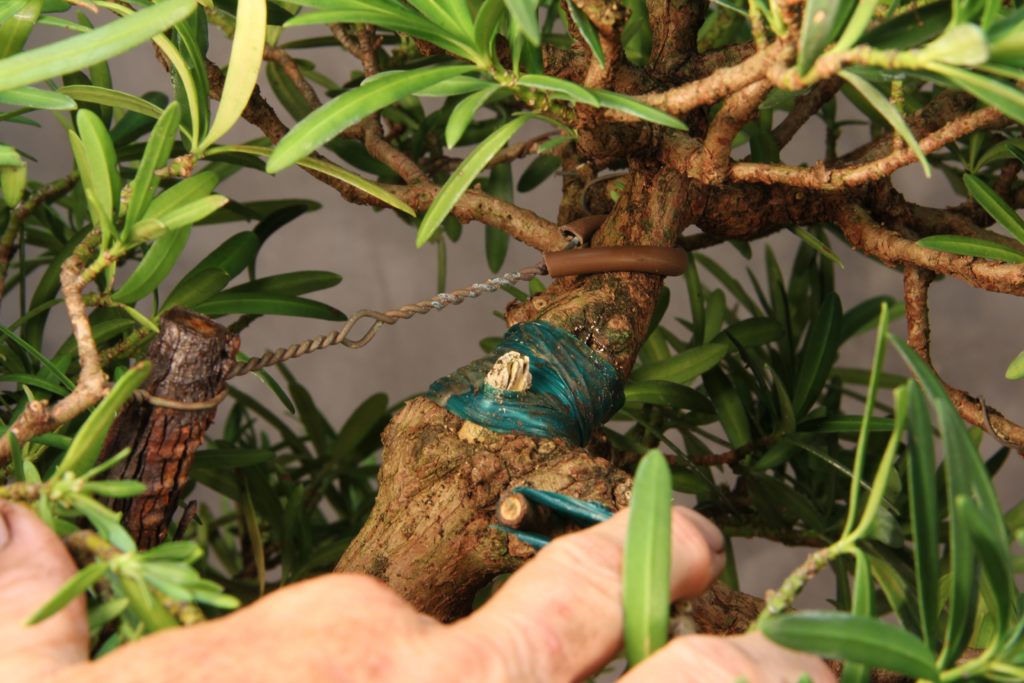
Two years later the apex appeared to be growing strong and the wire holding the rebar starting digging into the trunk so I decided to risk removing the corrective structure to see if the repair took. Lucky upon removing the turnbuckle the apex had no springback indicating the crack had healed over. After a repot the tree the tree was ready for another bonsai show.
